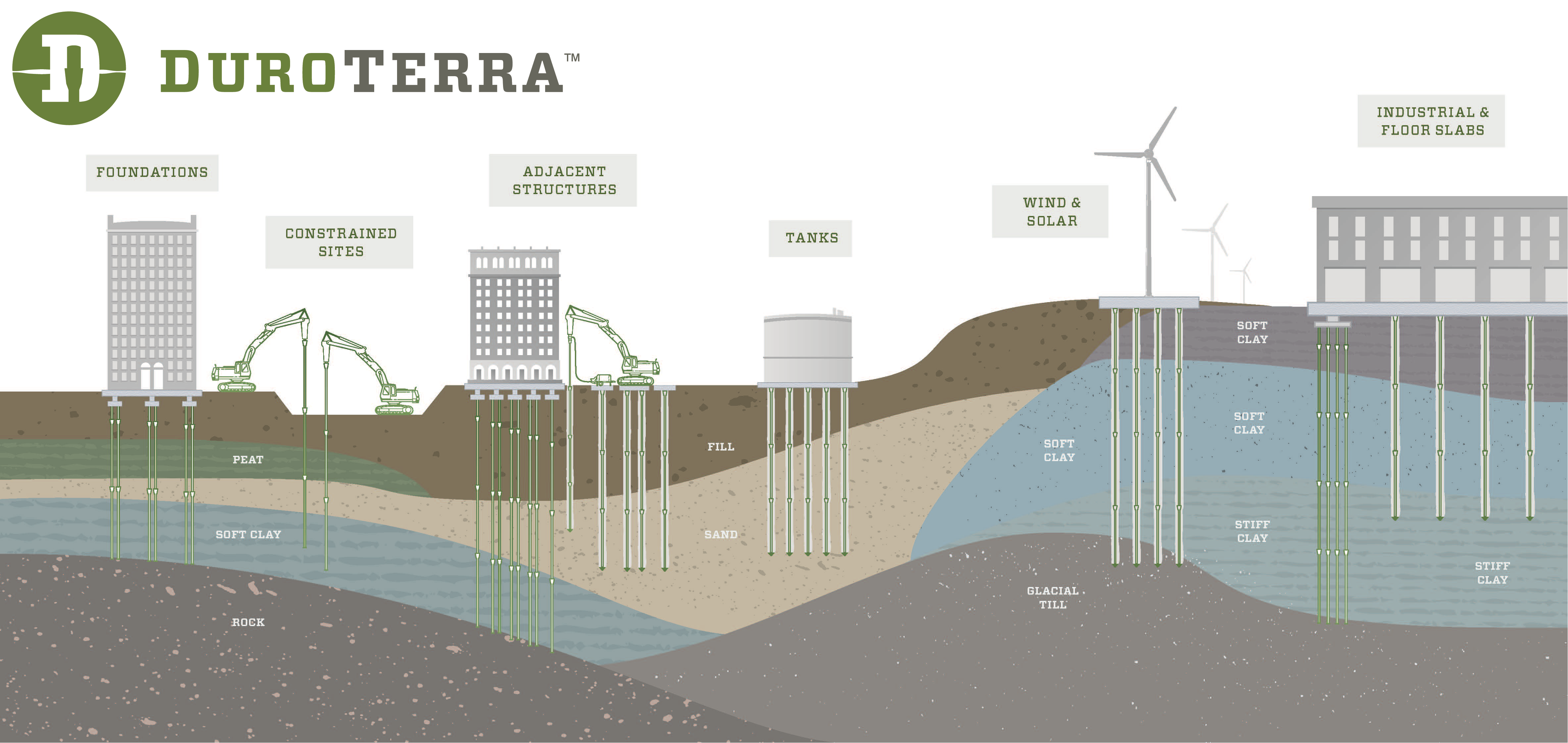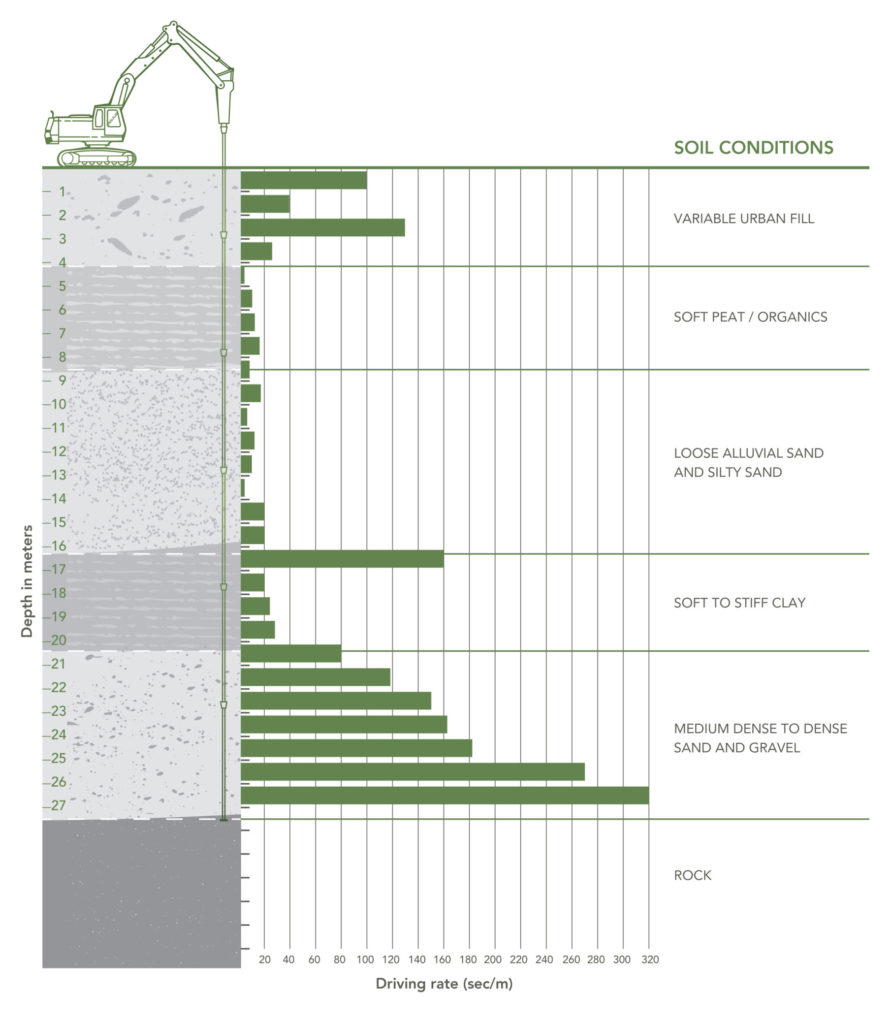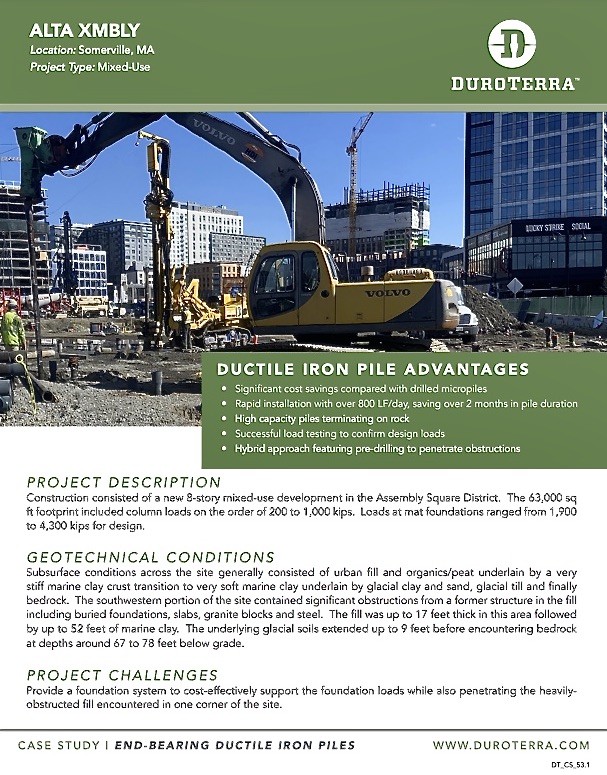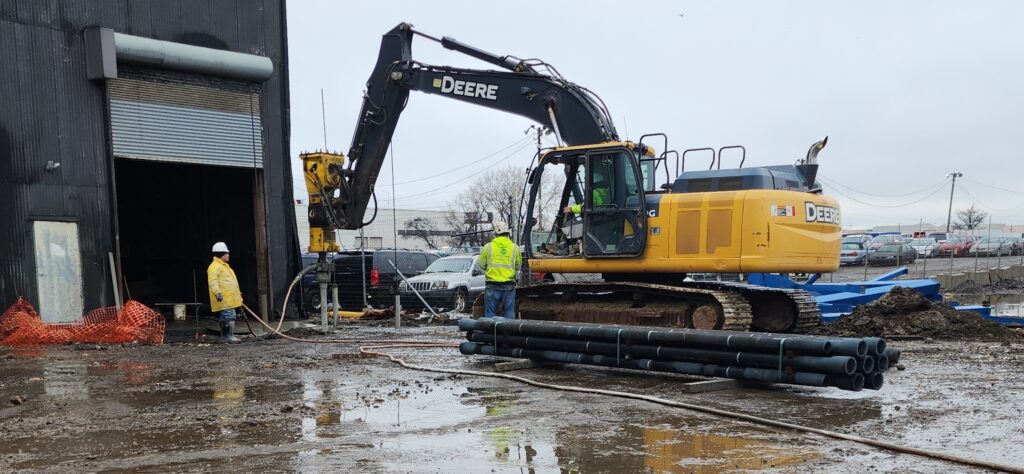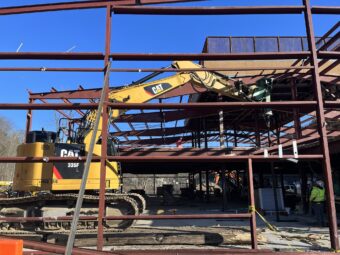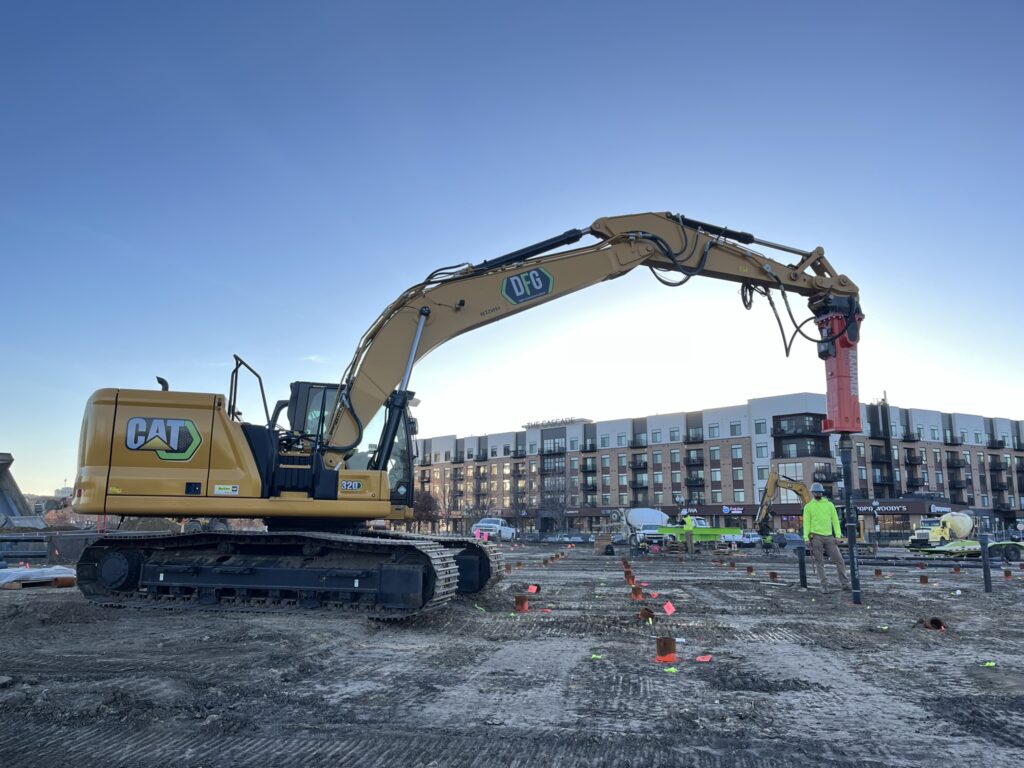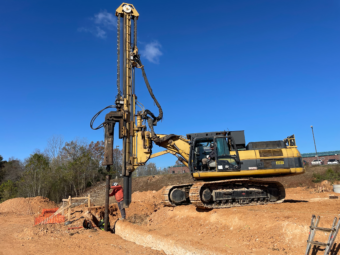Ductile Iron Piles – Common Geotechnical Myths
Geotechnical Myth 1: Ductile Iron Piles are only for end-bearing applications going to bedrock.
Geotechnical Myth 2: Small diameter Ductile Iron Piles are primarily used for short pile lengths.
While the pile sections are typically manufactured in 5-meter lengths, the innovative Plug & Drive connection forms a friction-welded joint during the driving process, allowing multiple modular sections to be connected and driven to virtually any practical length. Some projects may use only 1 or 2 pile sections (“sticks”) to extend to depths of 20 or 30 feet. However, many of our projects use piles extending to 50 ft, 100 ft, or more. In fact, Ductile Iron Piles were terminated on rock at depths of 175 to 180 ft (and load tested) on a site in Boston, Massachusetts. In Europe, pile lengths have even exceeded 200 feet!
Geotechnical Myth 3: Ductile Iron Piles will not penetrate through dense soil conditions.
When installed using the right compatible hammer, Ductile Iron Piles can penetrate through very dense conditions to achieve “set” or refusal for end-bearing applications. The combination of the small pile diameter coupled with the high-frequency percussion energy enables the piles to penetrate through hard-driving conditions. It is common for piles to penetrate deposits with SPT N-values more than 50 to 100 bpf. To maximize end-bearing approaches, designers often target soil conditions with SPT N-values on the order of 50 or 100 blows per 1-inch, 2-inches, or auger-refusal on bedrock. This means that piles can routinely drive through very dense soil layers that other systems (i.e. helical piles) cannot penetrate. This also means that Ductile Iron Piles will not achieve a pre-mature “set” in a medium dense layer, allowing piles to penetrate deep enough to maximize end-bearing capacity.
Geotechnical Myth 4: Ductile Iron Piles can not be used on “urban” fill sites.
Ductile Iron Piles are a driven system and do face similar challenges as traditional driven piles on sites containing “urban” fill. As we learned in Myth 3, the percussion installation energy enables the small diameter piles to penetrate dense zones. This allows project teams to consider Ductile Iron Piles on sites with problematic fills. Extensive project experience has shown the system to be effective on “urban” fill sites provided large, oversized obstructions (i.e. granite blocks, concrete footings, slabs, etc) are not encountered. In some cases, even with oversized obstructions, our installers have successfully implemented pre-drilling programs to penetrate through obstructions using traditional or sonic pre-drilling techniques. Pre-drilling allows installers to penetrate the obstructions yet still capture the benefits of installation speed and cost efficiency that Ductile Iron Pile systems provide.
Geotechnical Myth 5: Being a driven system, Ductile Iron Piles have high vibrations.
Ductile Iron Piles are a clearly driven system. The hammer is a hydraulic percussion hammer (“breaker”) that delivers vertical, impact-driving energy. It is not a vibratory hammer. The percussion hammers operate at a frequency of 300 to 600 cycles per minute which is considerably faster than traditional piling hammers. The high frequency coupled with the small pile diameter (less ground displacement) results in vibration levels that are typically well below 2 inches per second within a few feet of installation (often less than 1 ips). These vibration levels also dissipate rapidly with distance due to the high frequency energy, so vibrations are insignificant at distances of 10 ft or 20 ft or 30 ft from the installation. This enables the system to be installed for building additions or interior foundation applications. Here’s an example of an active shipping distribution project benefiting from the low vibration solution.
CONTACT US TODAY: info@duroterra.com / 781.817.6053

